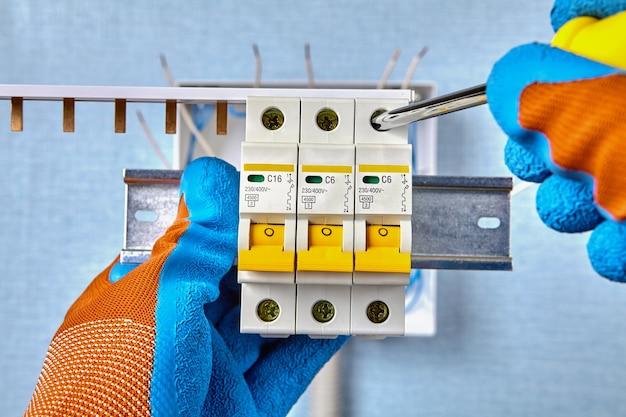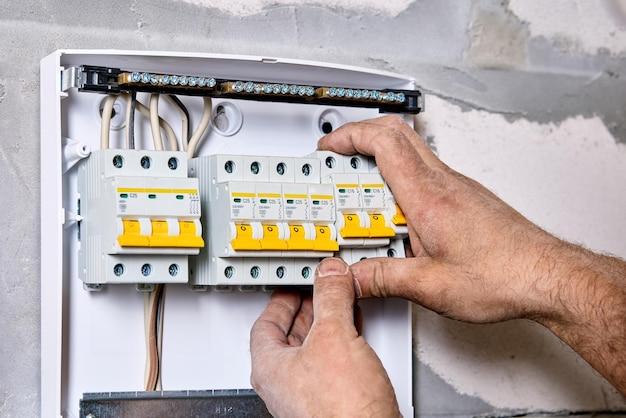Are you tired of constantly replacing torn rubber items? Whether it’s a ripped rubber sole on your favorite pair of shoes or a damaged rubber gasket on your car, fusing rubber together can save you time and money. In this blog post, we’ll explore various methods and techniques for joining rubber materials, including melting, gluing, and welding.
From using common household items like hot glue and super glue to specialized adhesive options like Gorilla glue, we’ll cover a wide range of solutions to help you find the right method for your specific rubber bonding needs. We’ll also address some common questions, such as whether you can melt silicone back together and mix plastic with rubber. So if you’re ready to learn how to make rubber repairs like a pro, let’s dive in!
How to Fuse Rubber Together
Rubber is a versatile material that has countless applications, from tire manufacturing to shoe soles. But what happens when you need to join two pieces of rubber together? Fear not, my friend, because I’m here to show you the ins and outs of fusing rubber like a pro!
Tools of the Trade
Before we dive into the actual process, let’s make sure we have all the necessary tools by our side. Here’s a quick checklist to get you started:
-
Rubber cement: This magical adhesive is the elixir of rubber fusion. Make sure you get a high-quality rubber cement for the best results. Don’t be cheap when it comes to bonding rubber!
-
Sandpaper: We’ll need sandpaper to roughen up the rubber surfaces before applying the cement. Think of it as giving the rubber a mini spa treatment to ensure a strong bond.
-
Clamps: In the world of rubber fusion, clamps are your best friends. These trusty tools will hold the rubber pieces together while the cement works its magic. Just make sure they’re not the type to gossip.
Now that our tool arsenal is ready, let’s move on to the actual process.
Rough ‘Em Up!
No, we’re not talking about picking a fight with your rubber pieces. We simply need to roughen up their surfaces to help the cement adhere better. Take the sandpaper and gently rub it against the areas you want to fuse. Think of it as giving the rubber a good scrub to remove any dirt or grime.
Apply the Magic Potion
Now comes the fun part: applying the rubber cement. Take a small brush or a cotton swab and dip it into the jar of rubber cement. Carefully apply a thin layer of the adhesive to both rubber surfaces. Just remember, a little goes a long way, so try not to go overboard with the application.
Press and Hold
Once the rubber surfaces are coated with the rubber cement, press the pieces firmly together. Now, here’s where the clamps come into play. Secure the clamps tightly around the edges of the rubber to keep everything in place. Think of it as a rubbery embrace that will last for years to come.
Curing Time
Like a fine wine, the fusion of rubber takes time. We need to give it some space to bond and develop a strong connection. Ideally, let the rubber pieces sit undisturbed for at least 24 hours. This may require some patience on your part, but believe me, it’s worth the wait.
Finishing Touches
After the waiting game, it’s time to remove the clamps and inspect your newly fused rubber creation. If everything went according to plan, you should have a sturdy bond that can withstand the test of time. Now, go forth and conquer with your fused rubber skills!
Remember, dear reader, fusing rubber together is not just a mere task; it’s an art you can proudly master. With the right tools, a touch of patience, and a sprinkle of rubber cement, you’ll become the Picasso of rubber fusion. So, go ahead and let your imagination run wild with all the incredible projects you can tackle using your newly acquired knowledge!
Happy bonding, and may your rubber connections be as strong as the bonds of friendship!
FAQ: How To Fuse Rubber Together
Can you melt silicone back together
Silicone is notoriously difficult to melt back together. Due to its unique composition and high heat resistance, melting silicone can be a tricky task. It is recommended to avoid attempting to melt silicone back together, as it may result in a poor bond or even damage the silicone itself.
Does hot glue work on rubber
Hot glue can be a viable option for bonding some types of rubber. However, it’s essential to choose the right type of hot glue that is specifically formulated to adhere to rubber surfaces. Make sure to read the label or check with the manufacturer to ensure compatibility.
How do you overlap a rubber roof
When overlapping a rubber roof, it is crucial to follow proper installation guidelines to ensure a watertight seal. Start by cleaning the surface thoroughly and removing any debris. Then, apply a compatible adhesive or roofing cement to bond the overlapping sections, carefully aligning them to create a secure connection.
Can you mix plastic and rubber
Mixing plastic and rubber can be challenging due to their different chemical compositions. While some adhesives claim to bond these materials, it is recommended to use a specialized adhesive that is designed specifically for bonding plastic and rubber.
Does Super Glue Work on silicone rubber
Super Glue, or cyanoacrylate adhesive, is generally not recommended for bonding silicone rubber. Silicone rubber has a low surface energy, which makes it difficult for Super Glue to create a strong and durable bond. It is advisable to seek adhesives specifically designed for bonding silicone rubber.
What glue is best for rubber to rubber
When bonding rubber to rubber, it is essential to use an adhesive that is specifically formulated for this purpose. Two common options are rubber cement and adhesive tapes. Rubber cement provides a flexible and strong bond, while adhesive tapes offer convenience and ease of application.
Can EPDM be joined
EPDM (Ethylene Propylene Diene Monomer) can be joined using compatible EPDM bonding adhesives. These adhesives ensure a secure bond between EPDM surfaces, creating a watertight seal. Follow the manufacturer’s instructions for the specific adhesive you are using to achieve the best results.
Does Gorilla glue stick rubber to metal
Yes, Gorilla Glue is known for its versatility and strong bonding capabilities. It can be used to bond rubber to metal effectively. Clean the surfaces thoroughly, apply the Gorilla Glue evenly, and join the rubber and metal together. Allow sufficient curing time for the bond to reach its maximum strength.
Can rubber be welded together
Rubber welding, also known as vulcanization, is a technique used to join rubber pieces together. It involves heating the rubber surfaces and adding a vulcanizing agent to create a chemical bond. Rubber welding should be performed by professionals using specialized equipment to ensure a proper and durable bond.
Is Gorilla glue good for rubber
Gorilla Glue is a versatile adhesive that can bond various materials, including rubber. Its strong bond makes it suitable for many rubber bonding applications. However, always check the label or manufacturer’s instructions to ensure compatibility between the specific rubber type and Gorilla Glue.
Can you glue rubber to rubber
Yes, rubber-to-rubber bonding is possible using adhesive products formulated for this purpose. Rubber cement, contact adhesives, or adhesive tapes designed for rubber-to-rubber bonding can be used to achieve a strong and durable bond. Follow the instructions provided by the adhesive manufacturer for the best results.
How do you fuse silicone rubber
Fusing silicone rubber together requires specialized techniques and equipment. Silicone rubber can be fused using methods such as liquid silicone injection molding or heat curing with silicone-specific adhesives. It is recommended to consult professionals or manufacturers experienced in silicone rubber fusion for best results.
Can you use JB Weld on rubber
JB Weld, a renowned epoxy adhesive, is not specifically designed for bonding rubber. While it may create a temporary bond, it is not recommended for long-term applications involving rubber materials. It is advisable to use adhesives specifically formulated for bonding rubber to achieve a reliable and durable bond.
How do you meld rubber together
Melding rubber together can be achieved through vulcanization or rubber welding techniques. Vulcanization involves heating the rubber material and adding a vulcanizing agent to create a chemical bond. Rubber welding utilizes specialized equipment and techniques to melt and fuse rubber pieces together. Both methods should be performed by professionals.
Can you melt rubber
Melting rubber can be a challenging task due to its high elasticity and heat resistance. While heating rubber can cause it to soften or deform, achieving a complete melting point is difficult without specialized equipment. It is advisable to explore alternative bonding methods for rubber applications rather than attempting to melt it.
How do you fix ripped rubber
To fix ripped rubber, you can use a specialized rubber repair adhesive or rubber cement. Thoroughly clean the surfaces, apply the adhesive, and carefully align the ripped edges, ensuring a tight bond. Allow the adhesive to cure as per the manufacturer’s instructions to achieve a strong and durable repair.
Can you put superglue on a tire
Super glue is not recommended for repairing tires. Tires undergo constant stress and flexing, which can cause the super glue bond to fail. Instead, consult a professional tire repair service or use tire repair patches and sealants specifically designed for tire repairs.
How do you bond metal to rubber
To bond metal to rubber, use an adhesive specifically formulated for this purpose. Clean the metal and rubber surfaces thoroughly, apply the adhesive evenly, and press the metal and rubber together firmly. Follow the adhesive manufacturer’s instructions for curing time and best practices to achieve a secure bond.
How do you make rubber stick to rubber
To make rubber stick to rubber, use adhesives designed for rubber-to-rubber bonding. Clean both rubber surfaces, apply the adhesive evenly, and press the rubber pieces together firmly. Allow sufficient curing time for the adhesive to reach its maximum strength and create a strong bond.
How do you devulcanize rubber
Devulcanizing rubber, the process of reversing the vulcanization process, is a complex and specialized procedure. It involves applying heat, pressure, and specific chemicals to break down the cross-links in vulcanized rubber. Devulcanization is typically carried out in industrial settings and requires expertise and specialized equipment.
How do you melt rubber back together
Melting rubber back together is not a recommended method for bonding rubber. Rubber’s high heat resistance and tendency to decompose at high temperatures make melting it a challenging task. It is advisable to explore alternative bonding methods such as adhesives or rubber welding for joining rubber materials.
How long does Gorilla Glue take to dry on rubber
Gorilla Glue typically dries within 24 hours. However, drying time can vary depending on several factors, such as temperature, humidity, and the thickness of the adhesive application. It is best to allow sufficient time for the Gorilla Glue to fully cure before subjecting the bonded rubber surfaces to any stress or load.
Does Liquid Nails work on rubber
Liquid Nails is a versatile construction adhesive that can bond various materials. While it may adhere to certain rubber surfaces, its compatibility with rubber can vary depending on the specific rubber composition and application requirements. Always check the Liquid Nails label or consult the manufacturer for recommended uses and compatibility with rubber.

